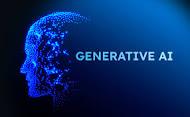Colleagues, in the “Data Science Course: Complete Data Science Bootcamp” you will learn how to pre-process data, understand the mathematics behind Machine Learning, start coding in Python and learn how to use it for statistical analysis, perform linear and logistic regressions in Python, carry out cluster and factor analysis, create Machine Learning algorithms in Python, using NumPy, statsmodels and scikit-learn, apply your skills to real-life business cases, use state-of-the-art Deep Learning frameworks such as Google’s TensorFlowDevelop a business intuition while coding and solving tasks with big data, unfold the power of deep neural networks, and improve Machine Learning algorithms by studying underfitting, overfitting, training, validation, n-fold cross validation, testing, and how hyperparameters could improve performance [66 sections • 520 lectures • 31h 46m total length]. Skill-based lessons include: 1) The Various Data Science Disciplines, 2) Popular Data Science Techniques, 3) Probability - Combinatorics, Bayesian Inference, Distributions, 4) Statistics - Descriptive Statistics, Inferential Statistics Fundamentals, Hypothesis testing, 5) Python - Variables, Data Types, Syntax, Operator, Conditional Statements, Functions, Sequences, Iterations, 6) Deep Learning - How to Build a Neural Network from Scratch with NumPy, TensorFlow, NNs, Deep Neural Networks, Overfitting, Initialization, and 7 Case studies.
Enroll today (teams & executives are welcome): https://tinyurl.com/3fuaecaj
Download your free Data Science - Career Transformation Guide.
Explore our Data-Driven Organizations Audible and Kindle book series on Amazon:
1 - Data-Driven Decision-Making (Audible) (Kindle)
2 - Implementing Data Science Methodology: From Data Wrangling to Data Viz (Audible) (Kindle)
Much career success, Lawrence E. Wilson - AI Academy (share with your team) https://tinyurl.com/hh7bf4m9

.jpeg)
.jpeg)
.png)
.jpeg)
.png)
.png)
.jpeg)
.jpeg)

